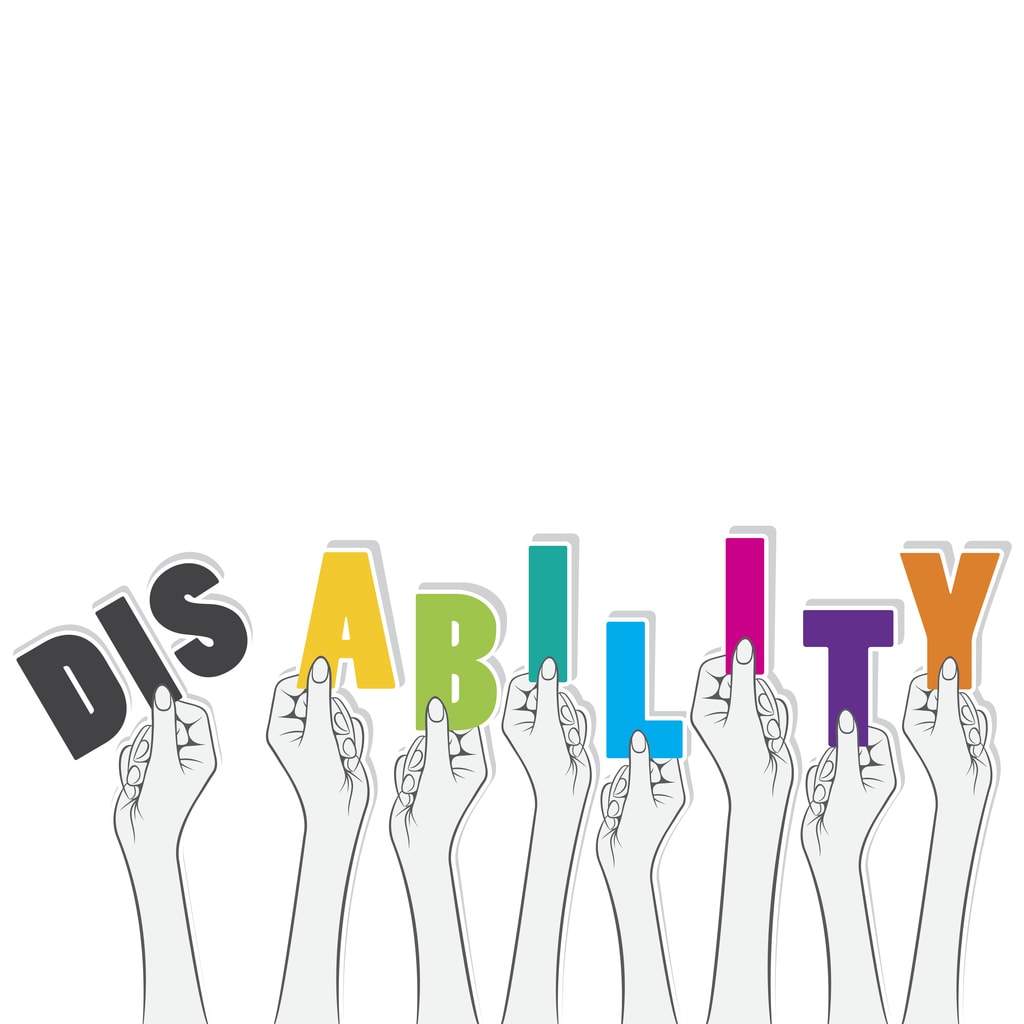invisible disability: any mental, physical or neurological condition where a person’s impairment is not readily noticeable to others; aka “hidden disability.”
*** TROVELOG ***
For 50 years, the now ubiquitous wheelchair graphic has signaled that there is a place – whether that is a restroom, an elevator, an entrance, an exit, a seating area, a parking spot – that provides an accommodation for someone with a physical disability.
People may have different levels of reactions when they see the ISA, but they expect that those availing themselves of the applicable accommodation will likely show some outward manifestation of a physical disability: sitting in a wheelchair; walking with crutches, braces, a walker, or a cane; or demonstrating a physical impairment because of some apparent physical condition or injury or, perhaps, simply from aging. In other words, such disabilities are readily “visible” to all concerned and it is understood that there is a provision of some kind of accommodation.
Unlike physical disabilities that are noticeable simply by observing a person, there are other physical disabilities – as well as mental and neurological disabilities – that are “hidden” or “invisible” since there are no clear outward manifestations of the disability. A person may have restraints on physical abilities, sensory perception, or behavioral traits that are not usually “seen” by others yet impede some physical abilities or cognitive processing capabilities.
Examples of invisible disabilities are: chronic pain, sight impairment, hearing impairment, mental heath issues, learning disabilities, dyslexia, and Autism Spectrum Disorders. These are all disabilities covered under the Americans with Disabilities Act of 1990 (ADA) and similar state statutes and local ordinances.
Although a person with a “visible” disability can certainly encounter discrimination, it is also possible that others will react with compassion and cooperation in acknowledgement of the disability and may make an effort to allow for, or even assist with, any necessary accommodations.
A person whose impairment is “invisible” may likewise suffer consequences and limitations that interfere with daily activities. However, since the nature of “invisible disabilities” is that they do not have any outward manifestations, they are unlikely to attract any notice by others, who are then unmindful of any need for accommodation. Furthermore, when a person’s “invisible disability” is not known by others who then may observe “different” behaviors in that person, their ignorance of the existence of the person’s disability may lead to negative conclusions about the person that are not justified.
◄TrovelogTrovelogTrovelogTrovelogTrovelogTrovelogTrovelog►
People often ask us to define invisible disability. To define invisible disability in simple terms is a physical, mental or neurological condition that limits a person’s movements, senses, or activities that is invisible to the onlooker. Unfortunately, the very fact that these symptoms are invisible can lead to misunderstandings, false perceptions, and judgments.
See webpage at: Invisible Disabilities Association: “What is an Invisible Disability?”
◄TrovelogTrovelogTrovelogTrovelogTrovelogTrovelogTrovelog►
But still there remains great misunderstanding about, discrimination against, and hostility toward people with disabilities using service dogs — most notably when those people have disabilities that are invisible.
. . .
As early as the 18th century, service dogs were used to assist people with invisible disabilities, including mental illness, depression and psychiatric disorders. Around 1997, the use of service dogs broadened to children with autism. And while service dogs assisted World War I veterans, it was not until Iraq and Afghanistan vets began using them that society moved toward acceptance — so long as their handlers were in the military. But others continue to face discriminatory attitudes.In 2010, the Americans with Disabilities Act was amended to include service dogs for people with invisible disabilities. The Missouri Governor’s Council on Disabilities names five distinct categories: guide dogs, mobility dogs, hearing dogs, seizure alert/seizure response dogs and medical alert/medical response dogs. The ADA National Network points out that psychiatric conditions are among the most common disabilities the act covers.
. . .
Unlike emotional support dogs, which are a different category, service dogs are trained to perform specific tasks for their owners or handlers. That work can range from opening doors to providing medication, alerting to dangerous situations, protecting their handlers during or after seizures, or redirecting the handler’s attention and helping them calm down when suffering from anxiety, a panic attack or post-traumatic stress disorder.See commentary at: Christopher Cross, “‘Legitimacy’ of a service dog isn’t always apparent,” The Kansas City Star, June 9, 2018
◄TrovelogTrovelogTrovelogTrovelogTrovelogTrovelogTrovelog►
Some of the gravest continuing problems involve people with “invisible” disabilities such as blindness, deafness, mental illnesses or learning disabilities.
Susan Scott-Parker, chief executive of Business Disability International, an organisation dedicated to unlocking the potential of disabled people, says that modern online recruitment systems are making matters worse. Partially-sighted people and people with learning disabilities, dyslexia and autism struggle to use one of the most popular online recruitment programs.
“It’s knocking out really good people who could bring a lot of talent to companies because they simply don’t understand what an obstacle that online recruitment is creating,” she says.
. . .Ms Scott-Parker points to the example of the UK’s Lloyds Banking Group, whose chief executive has set a target of making requested changes to lights or other parts of employees’ environment within 14 days to ensure disabled employees face the minimum possible barriers to productivity. It could previously take six months or longer to help an employee suffering migraines because of the wrong kind of light.
The policy change reflects how the banking group and many other employers recognise needs that extend widely beyond staff who are the most clearly disabled. Just 3 per cent of workers who identify as disabled are wheelchair users, for example. Employers may be slow to realise that their employees suffer some disabilities, particularly hidden ones. Employees are more likely to become disabled during their working lives than to have a congenital condition.
See article at: Robert Wright, “Uphill struggle to hire the disabled,” Financial Times, May 10, 2018
◄TrovelogTrovelogTrovelogTrovelogTrovelogTrovelogTrovelog►
Over half of disabled people feel at risk of losing their jobs and one in two have experienced bullying or harassment at work because of their disabilities, according to new research by disability charity Scope. But for disabled people with hidden disabilities – such as chronic pain conditions or mental health problems – the workplace can mean having to battle unique barriers, from being judged as workshy, because bosses and colleagues don’t believe they’re disabled, to the dilemma of whether to disclose their disability at all.
See article at: Frances Ryan, “Hidden disabilities at work: ‘Every day I’m fatigued and in pain’,” The Guardian, February 21, 2017
◄TrovelogTrovelogTrovelogTrovelogTrovelogTrovelogTrovelog►
Students with LDs [“learning differences”], which also are referred to as “invisible disabilities,” are finding that college is within reach. More schools are providing better services to students with conditions ranging from ADHD to Autism Spectrum Disorders to target a growing market. And although the stigma attached to various conditions still exists, advocacy groups have helped reduce some of it, making it easier for students to seek support. But as with “typical” students, finding the right college “fit” is just as important—perhaps more so—for anyone who learns differently.
. . .
LDs stem from neurological differences in brain structure and function that “affect a person’s ability to receive, store, process, retrieve, or communicate information.” The most common types affect reading, math, and written expression, and include ADHD, dyslexia, dyscalculia, and associated disorders such as auditory or visual processing deficits, executive function deficits, and nonverbal learning disabilities.See article at: Laura Casteñeda, “The Road to Higher Education with an ‘Invisible Disability’,” The Atlantic, September 22, 2016
◄TrovelogTrovelogTrovelogTrovelogTrovelogTrovelogTrovelog►
See related Trovelog posts: service animal <>






